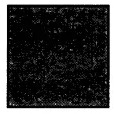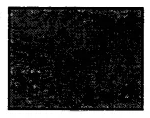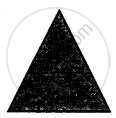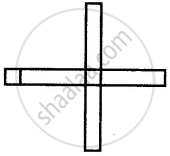Advertisements
Chapters
2: Rational Numbers
3: Fractions (Including Problems)
4: Decimal Fractions (Decimals)
5: Exponents (Including Laws of Exponents)
6: Ratio and Proportion (Including Sharing in a Ratio)
7: Unitary Method (Including Time and Work)
8: Percent and Percentage
9: Profit, Loss and Discount
10: Simple Interest
11: Fundamental Concepts (Including Fundamental Operations)
12: Simple Linear Equations (Including Word Problems)
13: Set Concepts (Some Simple Divisions by Vedic Method)
14: Lines and Angles (Including Construction of angles)
15: Triangles
16: Pythagoras Theorem
17: Symmetry (Including Reflection and Rotation)
▶ 18: Recognition of Solids (Representing 3-D in 2-D)
19: Congruency: Congruent Triangles
20: Mensuration
21: Data Handling
22: Probability
![Selina solutions for Concise Mathematics [English] Class 7 ICSE chapter 18 - Recognition of Solids (Representing 3-D in 2-D) Selina solutions for Concise Mathematics [English] Class 7 ICSE chapter 18 - Recognition of Solids (Representing 3-D in 2-D) - Shaalaa.com](/images/concise-mathematics-english-class-7-icse_6:880cdcd6265b4864b6486afbf92875b0.jpg)
Advertisements
Solutions for Chapter 18: Recognition of Solids (Representing 3-D in 2-D)
Below listed, you can find solutions for Chapter 18 of CISCE Selina for Concise Mathematics [English] Class 7 ICSE.
Selina solutions for Concise Mathematics [English] Class 7 ICSE 18 Recognition of Solids (Representing 3-D in 2-D) Exercise 18
Identify if the following net can be used to form a cube:

Yes
No
Identify if the following net can be used to form a cube:

Yes
No
Identify if the following net can be used to form a cube:

Yes
No
Identify if the following net can be used to form a cube:

Yes
No
Identify if the following net can be used to form a cube:

Yes
No
Draw at least three different nets for making a cube.
The figure, given below, shows shadows of some 3D object when seen under the lamp of an overhead projector:

A square
In this case, name the object.
The figure, given below, shows shadows of some 3D object when seen under the lamp of an overhead projector:

A rectangle
In this case, name the object.
The figure, given below, shows shadows of some 3D object when seen under the lamp of an overhead projector:

A triangle
In this case, name the object.
Using Euler’s formula, find the values of a, b, c and d.
| Faces | a | 5 | 20 | 6 |
| Vertices | 6 | b | 12 | d |
| Edges | 12 | 9 | c | 12 |
Dice are cubes with dots or dots on the face. Opposite faces of a die always have a total of seven on them.
In the given below net to make dice (cube), the numbers inserted in the square indicate the number of dots in it.

Insert suitable numbers in the blank so that numbers in opposite faces of the die have a total of seven dots.
Dice are cubes with dots or dots on the face. Opposite faces of a die always have a total of seven on them.
In the given below net to make dice (cube), the numbers inserted in the square indicate the number of dots in it.

Insert suitable numbers in the blank so that numbers in opposite faces of the die have a total of seven dots.
The following figure represent the nets of some solid. Name the solid

The following figure represent the nets of some solid. Name the solid

Draw a map of your classroom using proper scale and symbols for different objects.
Draw a map of your school compound using proper scale and symbols for various features like a playground, main building, garden, etc.
In the map of India, the distance between the two cities is 13.8 cm.
Taking scale: 1 cm = 12 km, find the actual distance between these two cities.
Solutions for 18: Recognition of Solids (Representing 3-D in 2-D)
![Selina solutions for Concise Mathematics [English] Class 7 ICSE chapter 18 - Recognition of Solids (Representing 3-D in 2-D) Selina solutions for Concise Mathematics [English] Class 7 ICSE chapter 18 - Recognition of Solids (Representing 3-D in 2-D) - Shaalaa.com](/images/concise-mathematics-english-class-7-icse_6:880cdcd6265b4864b6486afbf92875b0.jpg)
Selina solutions for Concise Mathematics [English] Class 7 ICSE chapter 18 - Recognition of Solids (Representing 3-D in 2-D)
Shaalaa.com has the CISCE Mathematics Concise Mathematics [English] Class 7 ICSE CISCE solutions in a manner that help students grasp basic concepts better and faster. The detailed, step-by-step solutions will help you understand the concepts better and clarify any confusion. Selina solutions for Mathematics Concise Mathematics [English] Class 7 ICSE CISCE 18 (Recognition of Solids (Representing 3-D in 2-D)) include all questions with answers and detailed explanations. This will clear students' doubts about questions and improve their application skills while preparing for board exams.
Further, we at Shaalaa.com provide such solutions so students can prepare for written exams. Selina textbook solutions can be a core help for self-study and provide excellent self-help guidance for students.
Concepts covered in Concise Mathematics [English] Class 7 ICSE chapter 18 Recognition of Solids (Representing 3-D in 2-D) are Concept of Recognition of Solids, Concept for Mapping the Space Around Approximately Through Visual Estimation., Faces, Edges and Vertices.
Using Selina Concise Mathematics [English] Class 7 ICSE solutions Recognition of Solids (Representing 3-D in 2-D) exercise by students is an easy way to prepare for the exams, as they involve solutions arranged chapter-wise and also page-wise. The questions involved in Selina Solutions are essential questions that can be asked in the final exam. Maximum CISCE Concise Mathematics [English] Class 7 ICSE students prefer Selina Textbook Solutions to score more in exams.
Get the free view of Chapter 18, Recognition of Solids (Representing 3-D in 2-D) Concise Mathematics [English] Class 7 ICSE additional questions for Mathematics Concise Mathematics [English] Class 7 ICSE CISCE, and you can use Shaalaa.com to keep it handy for your exam preparation.
